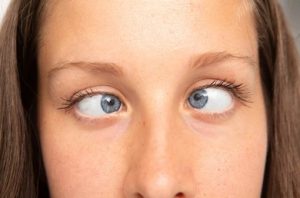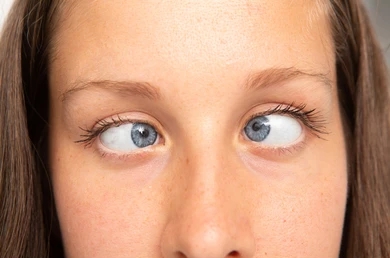Squint eye is a common eye disease that affects many people who continue to suffer from it, but very few know about the reasons behind its occurrence. There are several myths associated with the disease, and several people believe that this kind of disease is not curable. However, this is not the case. To understand the reasons for this, it is first important to understand what exactly is squint eyes. If you want to know more about squint eye and the reasons for its cause, continue reading this article.
What exactly is a Squint Eye?
Strabismus or a squint refers to a kind of vision disease where the eyes tend to be unaligned. The extraocular muscles, or the muscles that control the eyelid’s and the eye’s movements, are not coordinated. In simpler words, at a time, both the eyes tend to look in different directions. This means that while one eye is focused at a single spot, the other eye turns outwards, downwards, upwards, or inwards. Therefore, due to the abnormal nature of squint, it must be treated.

What Causes Squint?
It generally is challenging to find out the exact reason for the cause of a squint. This is majorly the case when an infant suffers from it. The key reasons why squint eye occurs are given below. Squint is likely to occur
- congenital, meaning a person is born with it
- damage to the muscles in the eyes
- due to a lesion on a cranial nerve
- in case the muscles of the eyes are not strong
- hereditary or running in families, suggesting a genetic link
- the result of an illness or long-sightedness
- The existence of several diseases includes retinal disease, eye tumours, refractive errors, optic nerve disease, corneal scars, glaucoma, and even cataract.
- Due to existing brain disorders, which do not allow the coordination of both the eyes.
- Through astigmatism, which is when the curvature of the cornea is not proper.
- Because of long-sightedness or hypermetropia.
- In case of short-sightedness or myopia.
- As a result of a viral infection, for instance, measles.
- Because of Noonan syndrome.
Options for Treatment
There are a number of options for treating squint. These are based on the reason or the cause of a squint eye. Some of these treatments are listed below.
- Exercises for the eye and even eye drops to aid in treating squint.
- Botox or botulinum toxin injection aids in the alignment of the eyes.
- An eye patch can help the good eye to work in coordination with the squint eye.
- Squint caused due to long-sightedness can be treated by wearing glasses.
- Surgery is only used if other treatments are not effective. It can realign the eyes and restore binocular vision.
The Bottom Line
Since squint has a variety of causes, it is crucial to comprehend the reason before treating it. Hence, in case you are experiencing an infection in the eye, blurred vision, twitching of the eye, or a lazy eye, you must immediately seek the consultancy of an optometrist.








